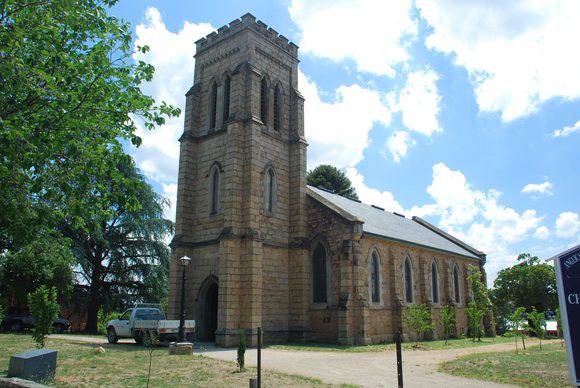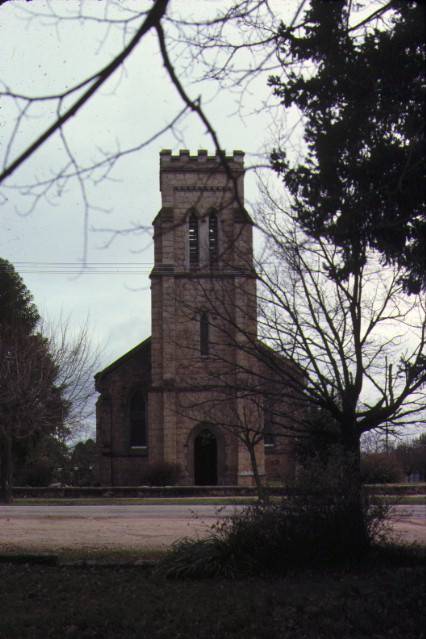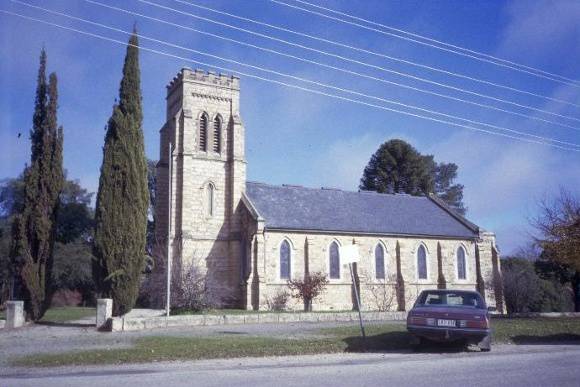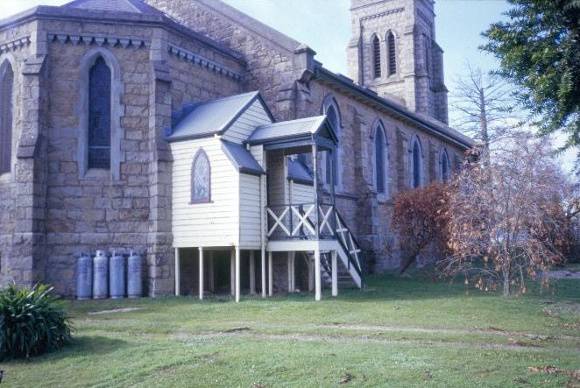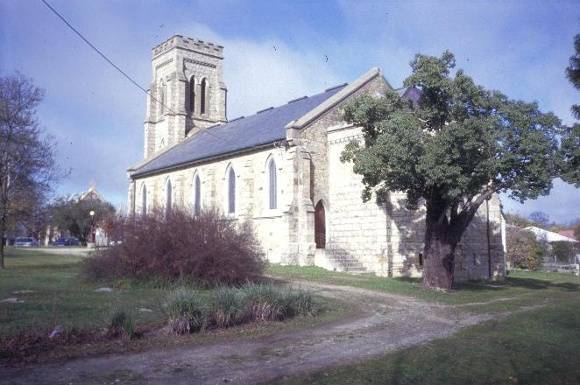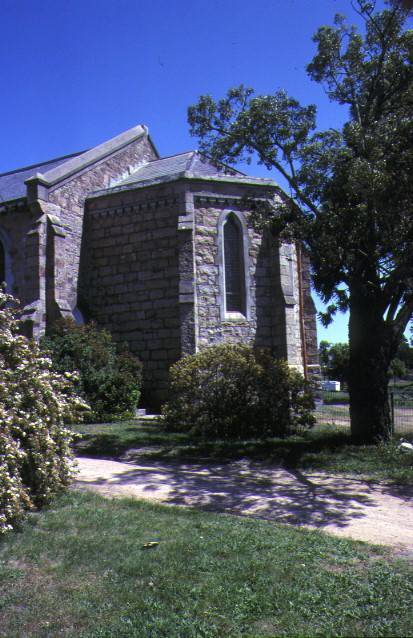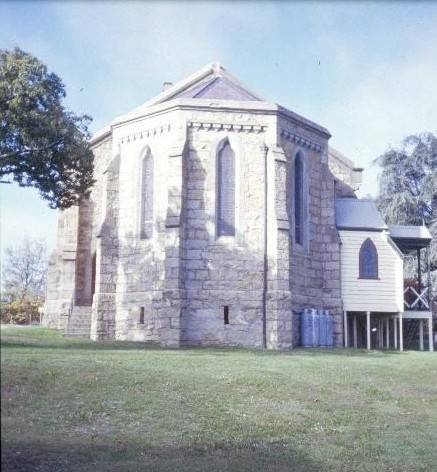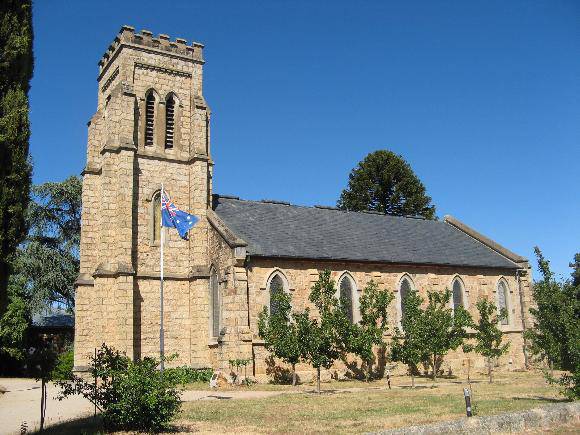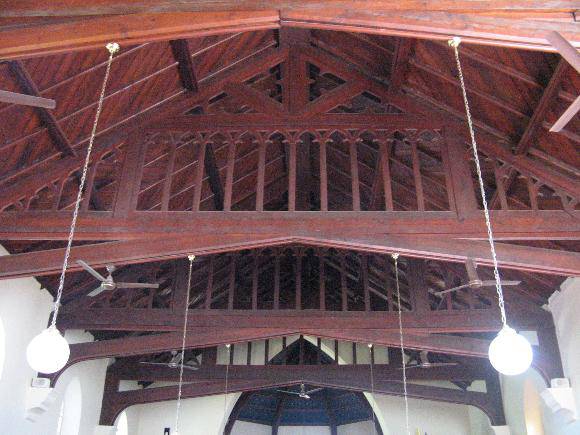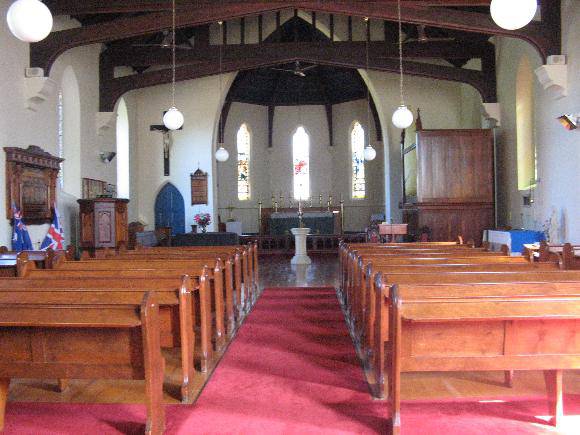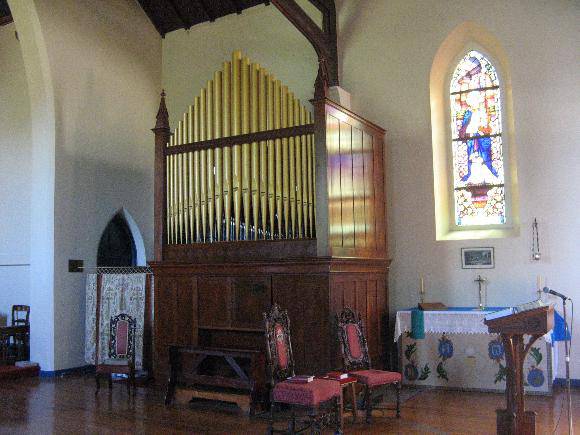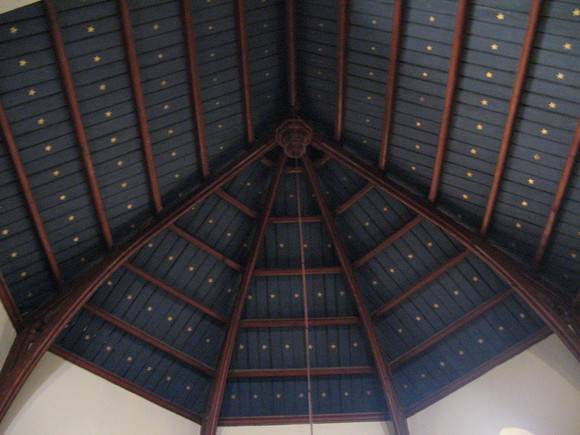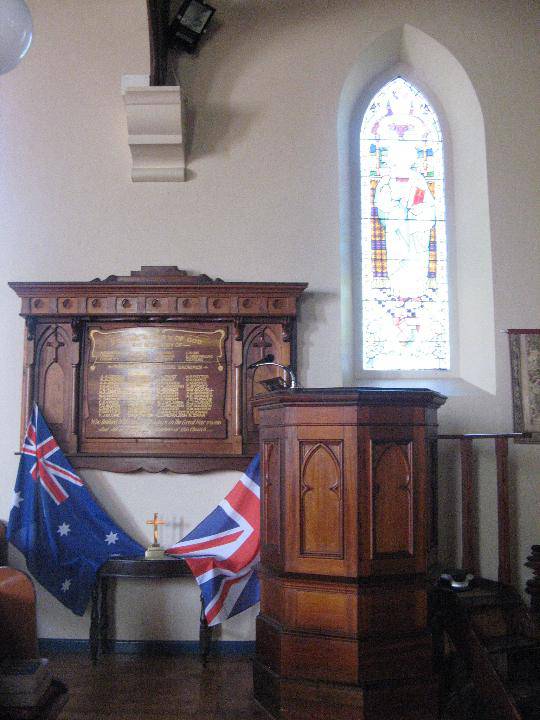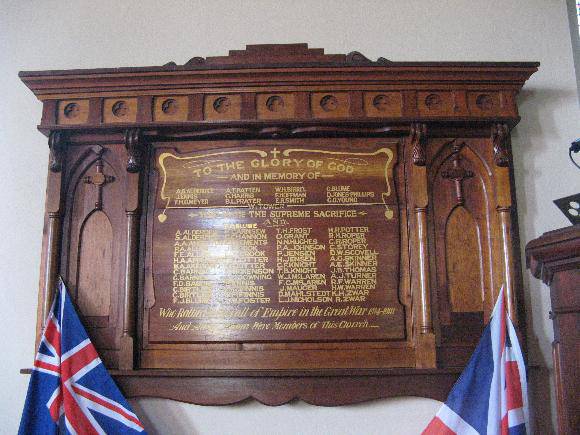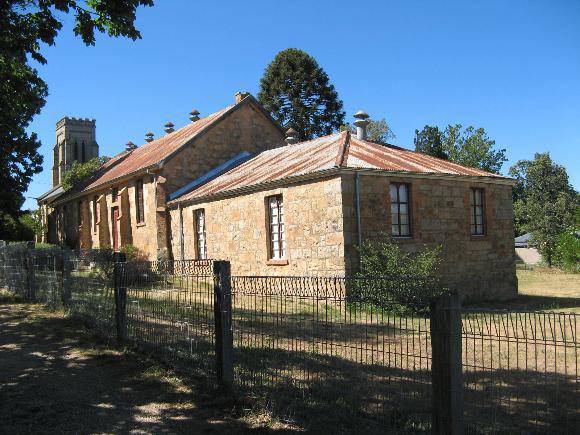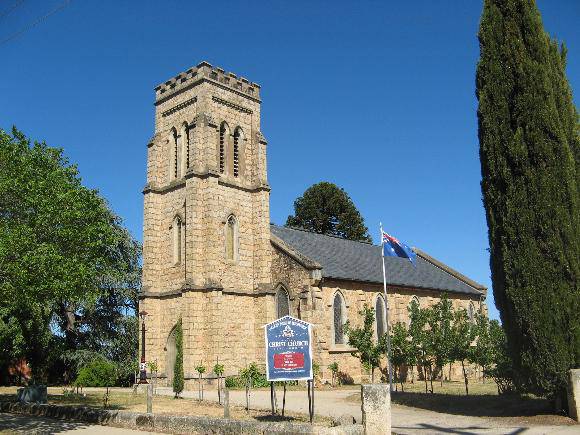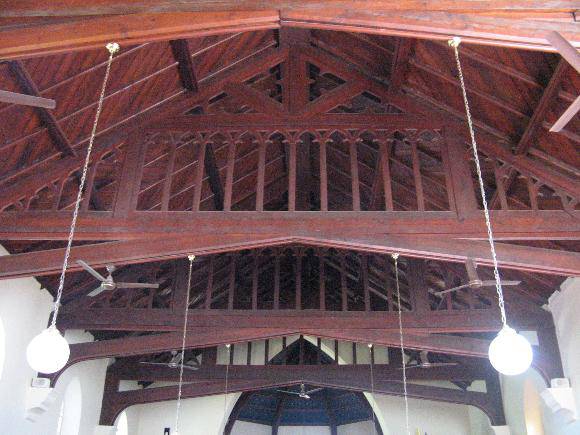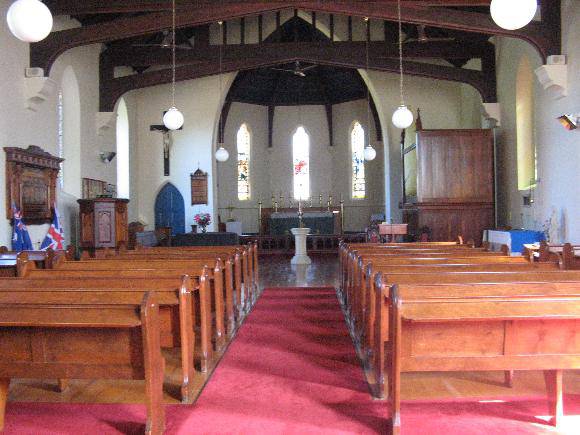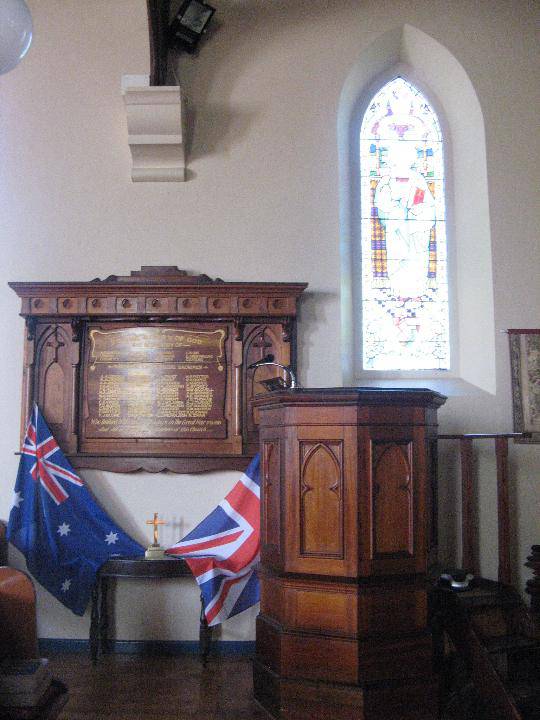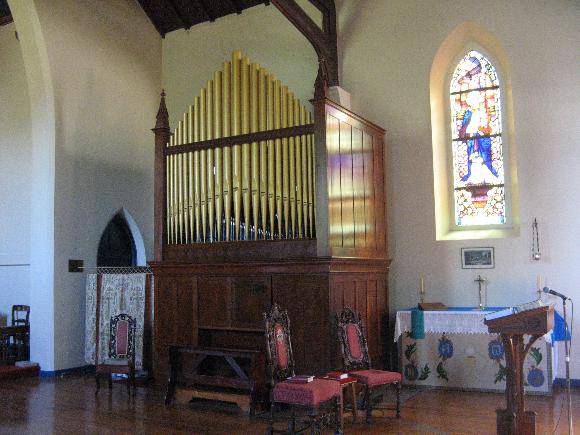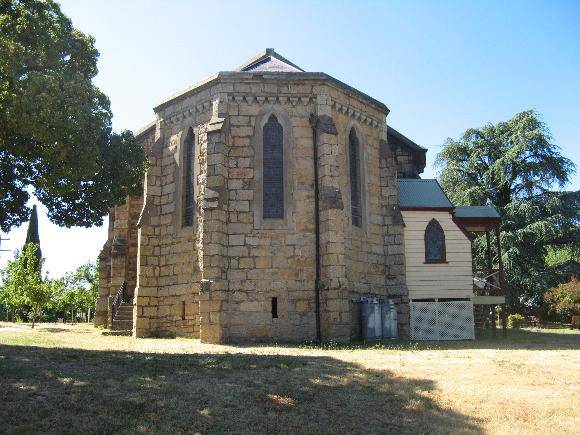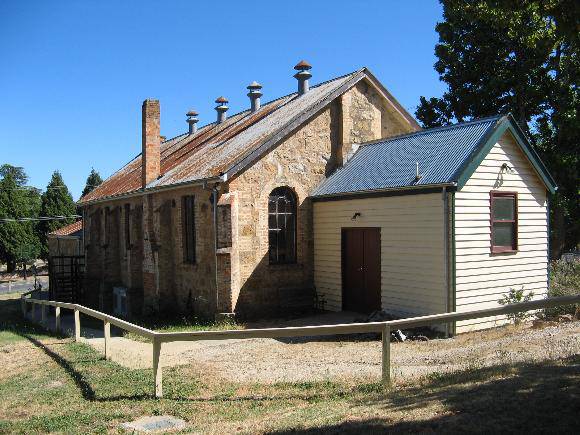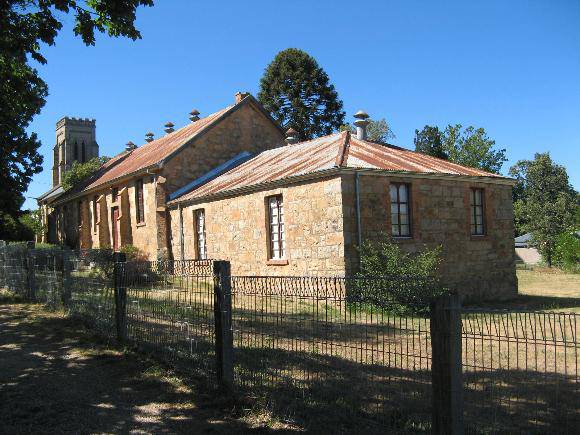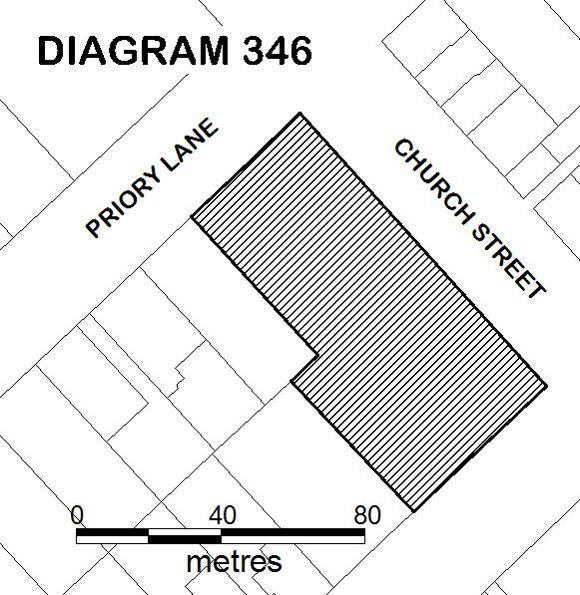| Back to search results » | Back to search page » |
|
CHRIST CHURCH
Statement of Significance
What is significant? Christ Church, Beechworth, including the main church building (the nave completed in 1859, and the tower and chancel completed in 1864, and including the pipe organ) and the c.1855 building at the rear. History Summary The first Anglican clergyman arrived in Beechworth in 1855, and at that time the stone building at the rear of the present church was constructed, and was used as a school, church and Sunday school. The foundation stone of the present church was laid in December 1858, and the building was constructed in two stages. The first stage, comprising the nave of the existing building, was designed by the local architect James Dobbyn, constructed by Stevens & Balfour, and opened in October 1859. In 1864 the Melbourne Diocesan architect Leonard Terry called for tenders for the addition of the tower and chancel, which were built by G R and C A Barry. The pipe organ in the church was built by William Anderson, of Melbourne. It was first installed in 1882 at a church in Carlton and was moved to its present location in 1887. In 1885-93 the Rev G F Cross was Rector of the parish, and lived in the original manse (now demolished) with his wife, the writer Ada Cambridge (1844-1926). Ada is considered to have been the first significant female poet in Australia, who won wide recognition in England and Australia for her writings, which included notable accounts of nineteenth century society in Victoria. Description Summary Christ Church is a Gothic Revival style building constructed of local granite with a slate roof. The buttressed nave with lancet windows dates from 1859 and the tower and polygonal chancel from 1864. The church is dominated by the square tower centrally-located at the east end. Pairs of buttresses express each corner of the tower and it is crowned by a castellated parapet. The interior features an impressive timber ceiling, a number of fine stained glass windows by eminent nineteenth century stained glass makers, including Ferguson & Urie and William Montgomery. There is also an important pipe organ and a ring of bells which was added to the tower in 1994. The original timber vestry annexe on the south side built c.1872 was demolished and the present one was added in 1988. The former Sunday School at the rear is an early stone building with a corrugated iron-clad gable roof. The side elevations are divided into bays by buttresses, and within each bay are slightly arched casement windows with painted brick quoining. The interior has been renovated and part is now used as a hall and part as an office/studio. A timber entrance vestibule has been added at the east end. How is it significant? Christ Church at Beechworth is of architectural and historical significance to the State of Victoria. It satisfies the following criterion for inclusion in the Victorian Heritage Register: Criterion A Importance to the course, or pattern, of Victoria's cultural history Criterion D Importance in demonstrating the principal characteristics of a class of cultural places and objects Criterion H Special association with the life or works of a person, or group of persons, of importance in Victoria's history. Why is it significant? Christ Church at Beechworth is significant at the State level for the following reasons: Christ Church is historically significant as a demonstration of the rapid development of the goldfields towns in Victoria during the 1850s. The two buildings on the site reflect the increasing prosperity of the local Anglican community during the 1850s, only a few years after the discovery of gold in the Beechworth area in 1852. The c.1855 building at the rear is significant as one of the first permanent religious buildings on the Ovens goldfields. It reflects the varied functions of these early buildings, which were often used for church services and Sunday schools on Sundays, and as schools on other days. [Criterion A] Christ Church is architecturally significant as a fine example of an early provincial church in Victoria. The c.1855 buildings is an unusual example of the first relatively primitive church buildings constructed in country Victoria. The two church buildings together demonstrate the changes which occurred in church architecture as the wealth of Victorian towns increased during the 1850s. [Criterion D] Christ Church is significant for its association with the eminent writer Ada Cambridge, who resided there from 1885-93. [Criterion H] Christ Church at Beechworth is also significant for the following reasons, but not at the State level: Christ Church is significant for the association of both buildings on the site with the early history of Beechworth. The simple composition, decoration and distinctive stone construction of the c.1855 building is typical of Beechworth's earliest permanent buildings. The 1859-64 church is a prominent local landmark at the entrance to the early town. The church tower is significant for its association with the eminent Diocesan architect, Leonard Terry and is a prominent local landmark.
Group
Religion
Category
Church


